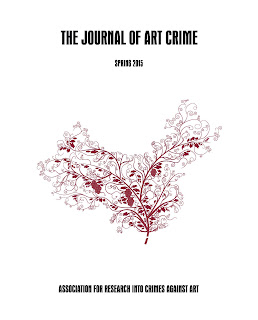Friday, August 28, 2015 -  Paolo Porpora,Taiwan
Paolo Porpora,Taiwan
 No comments
No comments
 Paolo Porpora,Taiwan
Paolo Porpora,Taiwan
 No comments
No comments
Doubts Emerge Over Authenticity of Painting Damaged by 12-Year-Old Boy in Taiwan.
In the last days, various news agencies have begun reporting that doubts have emerged over the authenticity of an Italian painting which made international headlines after a soda can carrying twelve year old accidentally punched a hole through it.
On August 23, 2015 the boy, on tour with his mother at the Huashan 1914 Creative Park, tripped near “Flowers” (“Fiori” in Italian) — a 17th-century oil panting by the Italian artist Paolo Porpora and put his hand out to stop his fall. The result, captured in its horrific entirety on CCTV footage, shows the child stumbling over the rope barrier separating visitors from the 17th-century oil painting. The result; a fist-sized hole, in a painting that has been hyphed by the media as being worth up to $1.5 million USD.
 |
| Damage to Paolo Porpora painting "Fiori" |
While conservators and those in the museum security field have lamented the damage and questioned why those organising the exhibition chose to place a dais and stanchions in front of that painting, or why the child was allowed in the gallery with a beverage in the first place, some in the media has begun to express doubts about the authenticity of an Italian painting.
Organisers of the exhibition have stated that the painting, part of a collection of 55 artworks in Taipei, was the only Paolo Porpora work that is known to have been signed and that the artwork was painted in the 1660s. The Italian artist lived and painted from 1617 until 1673.
Taiwan's Apple Daily, researching the incident, seems to believe that the painting matched an identical artwork titled "Composizione con vaso di fiori," a later, 17th-century painting by Mario Nuzzi, which was listed in the 2012 catalogue of the Della Rocca Casa d'Aste auction house, with a guide price of a mere 25,000 to 30,000 euros ($28,700-$34,000) significantly lower than the sensational estimate quoted in the media. An image of this version of the painting can be found in Della Rocca's archive on this page, listed as Lot 344. Others have questions why this one painting was signed and not the artist's others.
Speaking to reporters from Want China Times at the exhibition venue at the Huashan 1914 Creative Park, Andrea Rossi, the curator of the exhibition, said that the damaged painting by Paolo Porpora had been incorrectly attributed to Mario Nuzzi by the auction house in 2012. This incorrect attribution could be the reason for the differences in valuation though it is not unusual for the media to write eye-popping estimates of an artworks worth when it goes missing or is damaged. Figures seem to appeal to readers more than the words "priceless" or "invaluable". What is stranger is that the auction house would have misattributed a signed painting as the works of another. as the names "Nuzzi" and "Porpora" are not remotely similar.
 Regardless of its actual attribution or the painting's value, the hole in the canvas is being treated by Leo Tsai (蔡舜任), one of Taiwan's top painting conservators. For the past years Leo Tsai has been working to restore door god paintings at Taiwan’s temples. To see a short video of the conservator and some of the work he is doing please take a look at the heritage preservation group's Facebook page, Tiawan Temples.
Regardless of its actual attribution or the painting's value, the hole in the canvas is being treated by Leo Tsai (蔡舜任), one of Taiwan's top painting conservators. For the past years Leo Tsai has been working to restore door god paintings at Taiwan’s temples. To see a short video of the conservator and some of the work he is doing please take a look at the heritage preservation group's Facebook page, Tiawan Temples. 


















